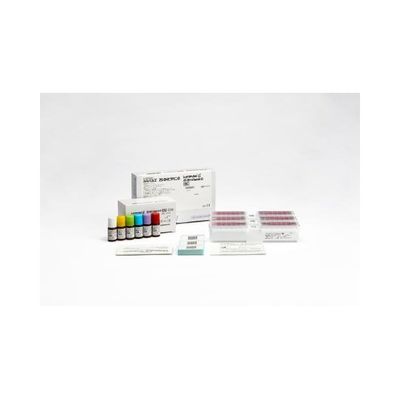


Lumipulse - Model G 25-OH Vitamin D - Fully Automated Testing Kit
New "ray of light" in Vitamin D testing. Lumipulse G 25-OH Vitamin D is an immunoreaction cartridge for in vitro diagnostic (IVD) use with the LUMIPULSE G System for the quantitative determination of 25-hydroxyvitamin D (25-OH-D) in human serum or plasma to be used in the assessment of Vitamin D sufficiency.
- CE marked
- Lumipulse G 25-OH Vitamin D Immunoreaction Cartridges
- Product number 235089: 3 x 14 Tests
- Lumipulse G 25-OH Vitamin D Calibrators
- Product number 234020: 1 x 6 x 1.5 ml
- Sandwich assay - showing improved performance
- Improved equimolarity - 25-OH Vitamin D2 and D3
- Higher correlation with LC-MS/MS
- A broad dynamic assay range - 4,0-150 ng/mL
- Novel VDBP release, no manual steps or auxilliary reagents required
- Good precision - within run 0,7-2,2% and total precision 1,6-3,5%
- 25 minute assay time, with a real throughput of 120 tests/hour combined with other analytes
- 30 day calibration
- Individual cartridge concept
Vitamin D is a fat-soluble, secosteroid hormone precursor. In humans, the most abundant forms are Vitamin D3 (cholecalciferol), followed by Vitamin D2 (ergocalciferol), known together as calciferol. Calciferol primarily undergoes hydroxylation in the liver to 25-OH Vitamin D (calcidiol), the major circulating form of vitamin D. The serum or plasma level of 25-OH Vitamin D is recognized as the most reliable indicator of vitamin D sufficiency. A second hydroxylation in the kidneys of a small amount of 25-OH Vitamin D produces 1,25(OH)2 Vitamin D (calcitriol). Calcitriol regulates calcium and phosphate blood concentrations through amongst other intestinal absorption.
Did you know?
Low 25-OH Vitamin D serum levels (lower than 10 ng/ml) have been found in 2-30% of adults within the European population [1]
Vitamin D deficiency was first discovered in the childhood disease rickets. However due to recent trends to avoid prolonged sun exposure due to cancer and aging impacts, the world`s population is even more at risk. Deficiency has been linked to various other medical conditions other than bone metabolism such as: adult osteomalacia, incresed risk for fractures, secondary hyperparathyroidism, autoimmune diseases, diabetes, associated with increased risk for certain cancers, and cardiovascular problems.
